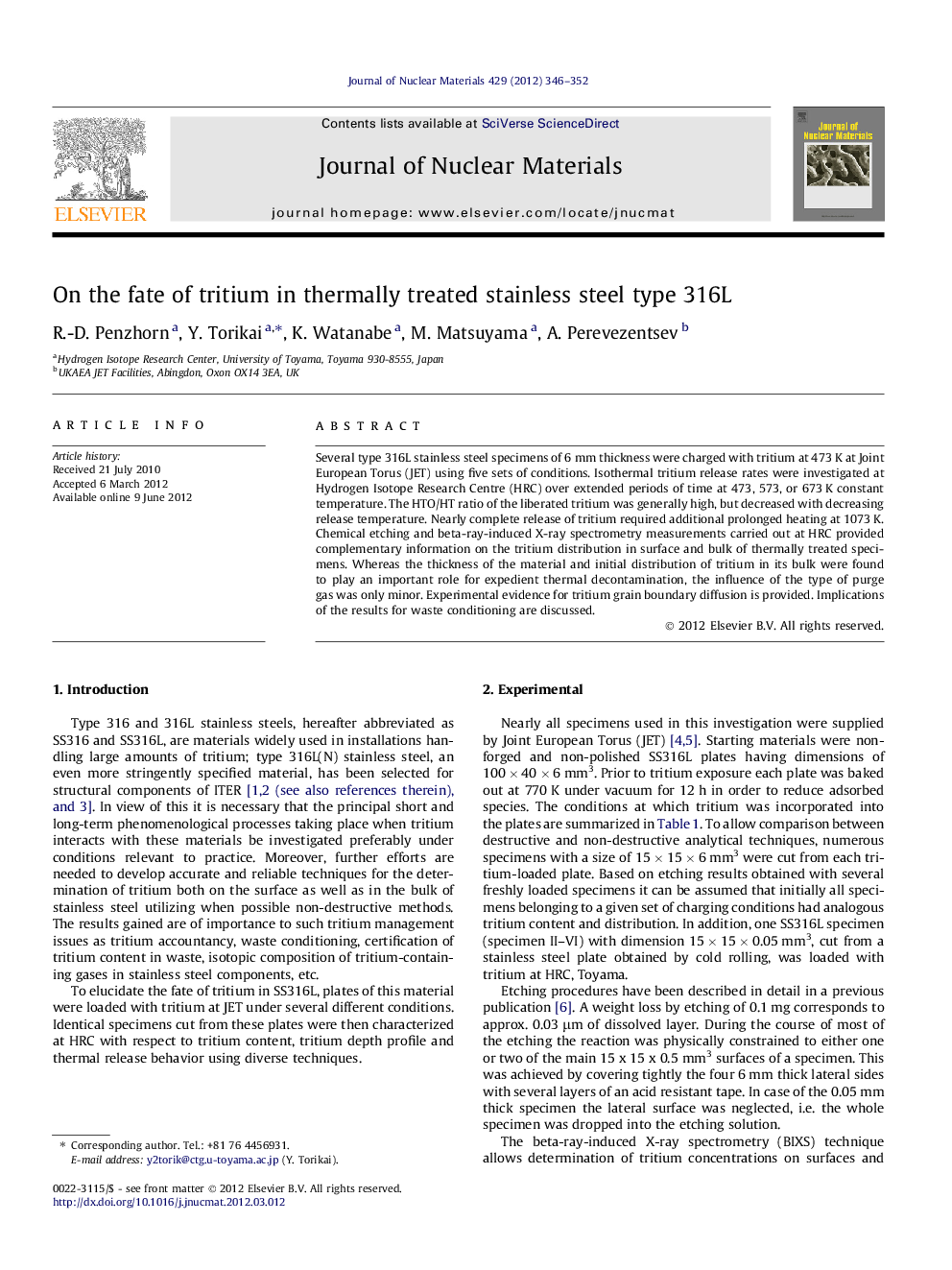| Article ID | Journal | Published Year | Pages | File Type |
|---|---|---|---|---|
| 1566151 | Journal of Nuclear Materials | 2012 | 7 Pages |
Several type 316L stainless steel specimens of 6 mm thickness were charged with tritium at 473 K at Joint European Torus (JET) using five sets of conditions. Isothermal tritium release rates were investigated at Hydrogen Isotope Research Centre (HRC) over extended periods of time at 473, 573, or 673 K constant temperature. The HTO/HT ratio of the liberated tritium was generally high, but decreased with decreasing release temperature. Nearly complete release of tritium required additional prolonged heating at 1073 K. Chemical etching and beta-ray-induced X-ray spectrometry measurements carried out at HRC provided complementary information on the tritium distribution in surface and bulk of thermally treated specimens. Whereas the thickness of the material and initial distribution of tritium in its bulk were found to play an important role for expedient thermal decontamination, the influence of the type of purge gas was only minor. Experimental evidence for tritium grain boundary diffusion is provided. Implications of the results for waste conditioning are discussed.
